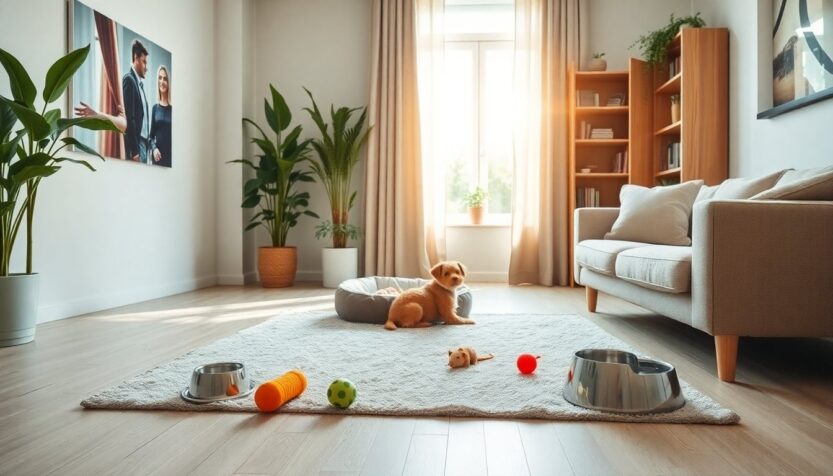In modern society, pets are recognized as integral members of families, offering companionship and affection. Ensuring a safe environment for these animals is essential. Similar to young children, pets, particularly puppies and kittens, are naturally inquisitive and can encounter various dangers within the home. This guide outlines crucial strategies to establish a pet-friendly living space that minimizes risks while enhancing their well-being.
Assessing potential hazards
Start by examining your home for potential dangers that could harm your pets. Consider common household items that are often overlooked. For instance, a decorative plant may be appealing but could pose a threat if ingested. Certain plants are toxic to pets and should be stored out of reach.
Securing dangerous substances
It is vital to safeguard medications and household cleaners. Store these items in high cabinets or utilize childproof latches to keep them out of paw’s reach. Additionally, store sharp utensils and glass items securely to prevent accidents. A curious pet might easily injure themselves on sharp edges or accidentally knock over fragile objects during play.
Lower yourself to your pet’s eye level and assess your surroundings. You may discover numerous potential hazards accessible to them that you might overlook from your height. It truly is a matter of perspective.
Kitchen safety and food storage
The kitchen can be a treasure trove of hazards for pets. Ensure that food is securely stored, as some common ingredients can be harmful if ingested. For example, items like macadamia nuts and products containing xylitol are extremely toxic to dogs. These ingredients are frequently found in sugar-free foods, making it essential to check labels before bringing items into your home.
Managing trash and food access
Trash cans can be particularly alluring to pets. Invest in a secure, lidded trash bin to prevent them from rummaging through leftover food or hazardous items, such as bones or sharp objects. Pets may find discarded food tempting, posing a risk to their health.
Consider using a pet gate to restrict your pets to designated areas when necessary. This can be especially beneficial for puppies still learning boundaries. When leaving them alone for an extended period, this measure can help prevent unexpected messes and maintain a more organized environment.
Creating a comfortable space for pets
Every pet deserves a dedicated area within the home. This could be a cozy bed, a crate, or a special spot in the living room where they can unwind. While many pets enjoy snuggling with their owners, having their own space fosters a sense of security.
If you have a yard, ensure it is adequately fenced. However, consider the type of fence installed, as some designs may allow small dogs to slip through. If necessary, adding a screening or Plexiglas barrier can help prevent escapes.
Choosing the right flooring
The choice of flooring can significantly impact your pet’s comfort and your ability to maintain cleanliness. For easy upkeep, select materials that can withstand wear and tear. Tile is a popular choice in warmer climates, offering a cool surface for pets to rest, while hardwood may become scratched from claws. Area rugs can enhance comfort but remember that carpet can be difficult to clean and may stain.
Start by examining your home for potential dangers that could harm your pets. Consider common household items that are often overlooked. For instance, a decorative plant may be appealing but could pose a threat if ingested. Certain plants are toxic to pets and should be stored out of reach.0
Creating a pet-friendly home
Start by examining your home for potential dangers that could harm your pets. Consider common household items that are often overlooked. For instance, a decorative plant may be appealing but could pose a threat if ingested. Certain plants are toxic to pets and should be stored out of reach.1
Start by examining your home for potential dangers that could harm your pets. Consider common household items that are often overlooked. For instance, a decorative plant may be appealing but could pose a threat if ingested. Certain plants are toxic to pets and should be stored out of reach.2





